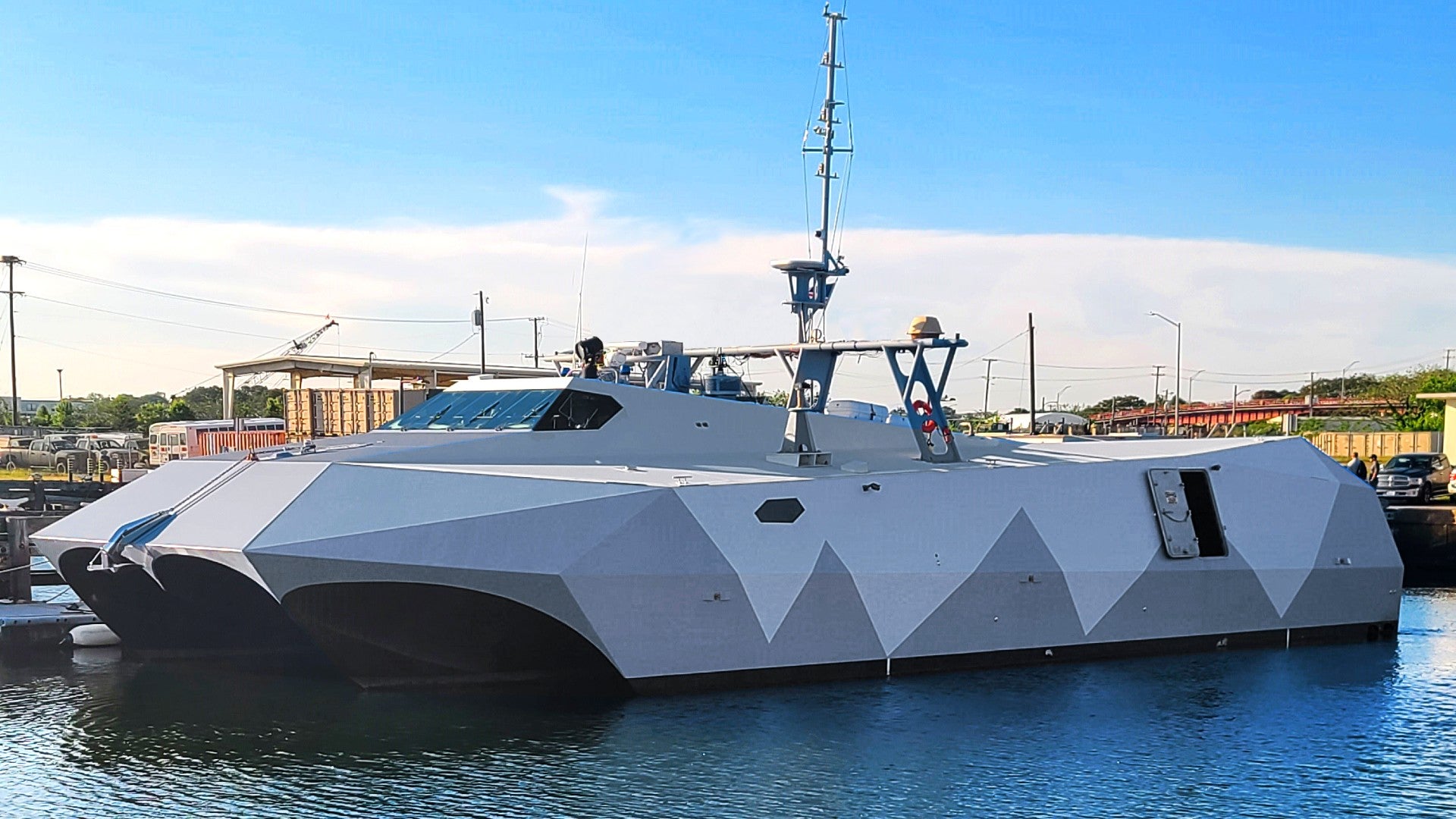The U.S. Navy’s exotic M80 Stiletto experimental testbed ship has successfully completed a six-week demonstration of an automated 360-degree detect-and-defeat anti-drone system. The demonstration saw the M80 go up against “drone swarms” and what has been described as “a wide range of unmanned robotic threats.” The combination of the Navy’s one-of-a-kind littoral vessel and an automated anti-drone system highlights the increasingly significant threat that lower-end unmanned systems pose to naval operations and may point to these systems becoming more common aboard surface ships.
The anti-drone system tested aboard the Stiletto was the DroneSentry-X manufactured by Australia-based defense contractor DroneShield. In their July 2021 newsletter, DroneShield claims the system tested aboard the Stiletto “demonstrated overall detection capability, detection and defeat ranges, on-the-move operation in various sea states, and effectiveness against drone swarms, involving a wide range of unmanned robotic threats.” The exact nature of the “swarms” in these tests is unknown, meaning it’s not clear if an actual networked, autonomous drone swarm was the threat in question or if the tests were conducted against multiple drones simultaneously.

For this latest demonstration, the M80 was fitted with the DroneSentry-X, a relatively small (24.9” x 24.9” x 9.1”) pod designed for roof-mounted applications. The entire system is housed within an IP66-rated octagonal shell, weighs just under 60 pounds, and is operated by a proprietary tablet-based digital control panel and display. On its product page, DroneShield writes that the system uses “integrated sensors to detect and disrupt UASs moving at any speed” and is “suitable for mobile operations, on site surveillance and on the move missions.”
The company claims the system uses artificial intelligence to analyze the surrounding radiofrequency environment and identify potentially hostile drones. Once the system identifies the particular radio bands used by those drones, it then activates “non-kinetic jamming for controlled management of response to threats.” A fact sheet for the system claims the DroneSentry-X has a detection range of more than 2km (1.2 miles), with a disruption range of “greater than 300m.”
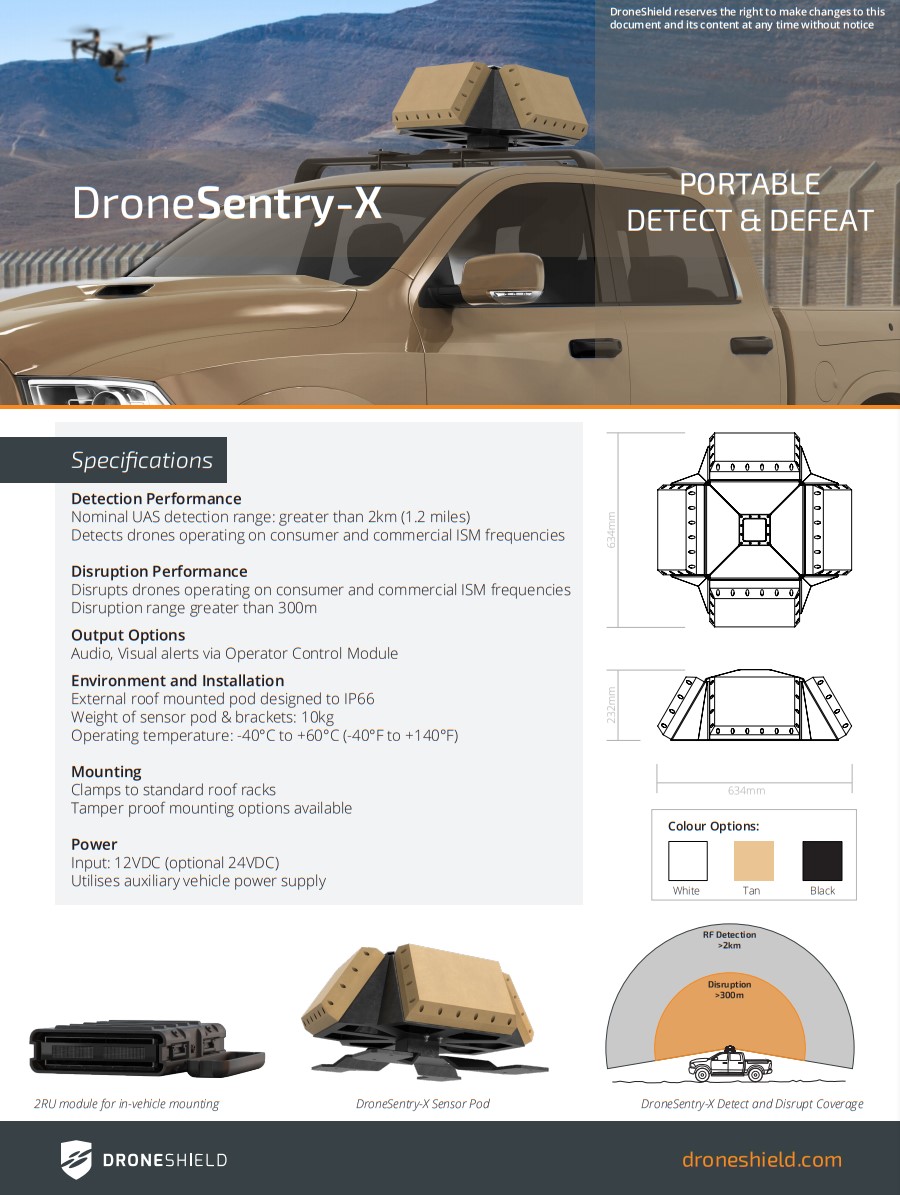
In an email to The War Zone, DroneShield CEO Oleg Vornik told us that the DroneSentry-X successfully passed all of the evaluations aboard the M80 Stiletto and added that “saltwater represents unique challenges to electronics, and these tests, in addition to performance against drones, also test the ruggedization and resilience in a wet, corrosive environment.” While the company’s releases and their CEO’s emails to The War Zone all claim the anti-drone system was tested against a “wide variety” of robotic threats, it’s unclear exactly what the threats in the demonstrations consisted of. The War Zone reached out to Vornik and the company to inquire about the details of these tests, but has yet to receive comments clarifying what exactly these tests involved.
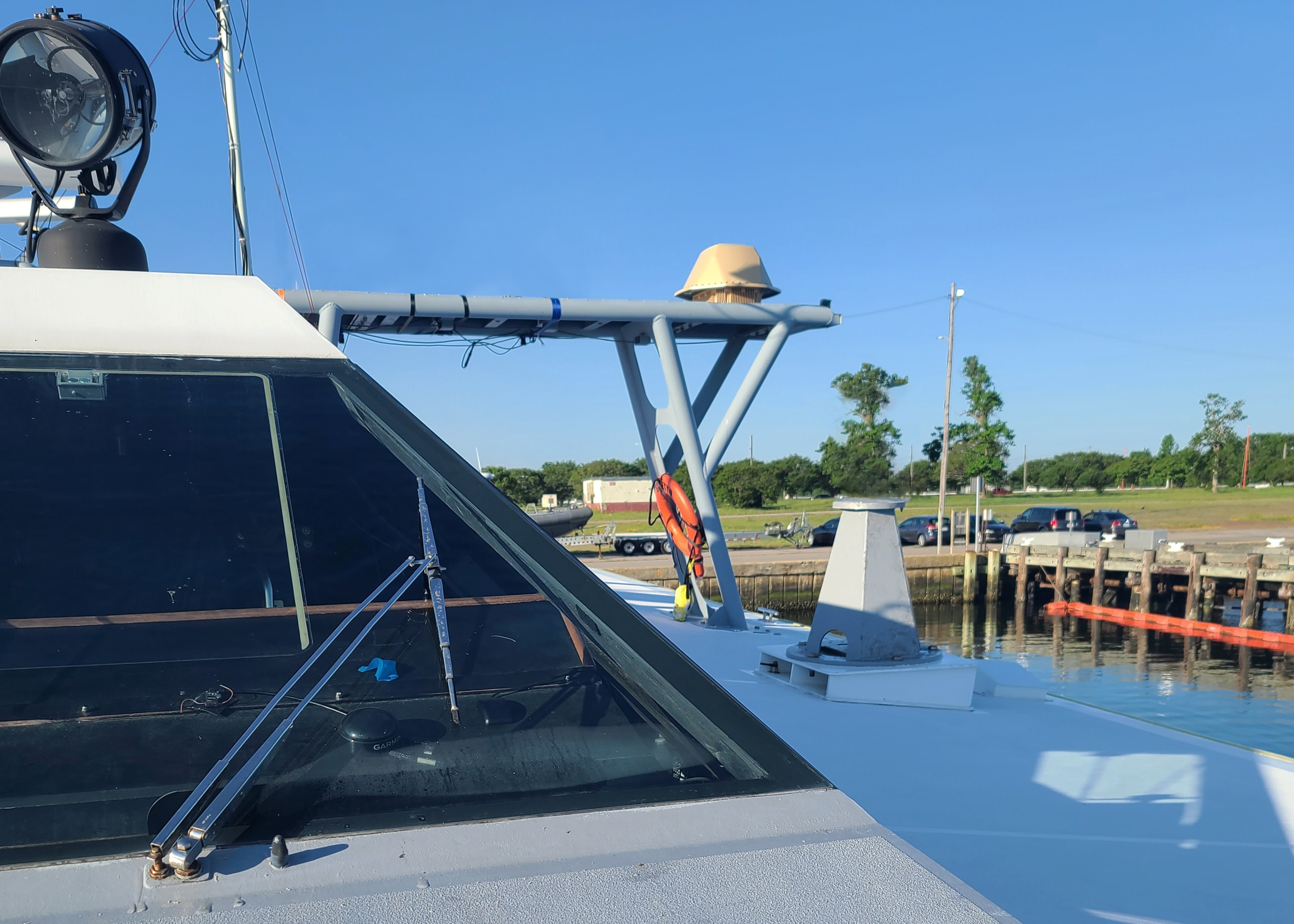
DroneShield also writes in their July newsletter that this latest successful US Navy demonstration validates other recent DroneSentry-X evaluations conducted by the Department of Defense (DOD), Department of Homeland Security, and various law enforcement agencies. The contractor makes a wide variety of sophisticated anti-drone products, including the sci-fi-looking rifle-style jammers seen deployed by the Belgian Federal Police at a meeting between U.S. President Joe Biden and King Philippe of Belgium last month.
While used primarily as a testbed for new systems and technologies, the Navy’s M80 Stiletto was envisioned as a combination of a high speed, low signature command and control station, a delivery platform for special operations forces (SOF), and a mothership that could launch and recover its own craft. The ship currently belongs to Naval Surface Warfare Center Carderock Division at Little Creek in Virginia, who refer to it as a “maritime demonstration craft.”
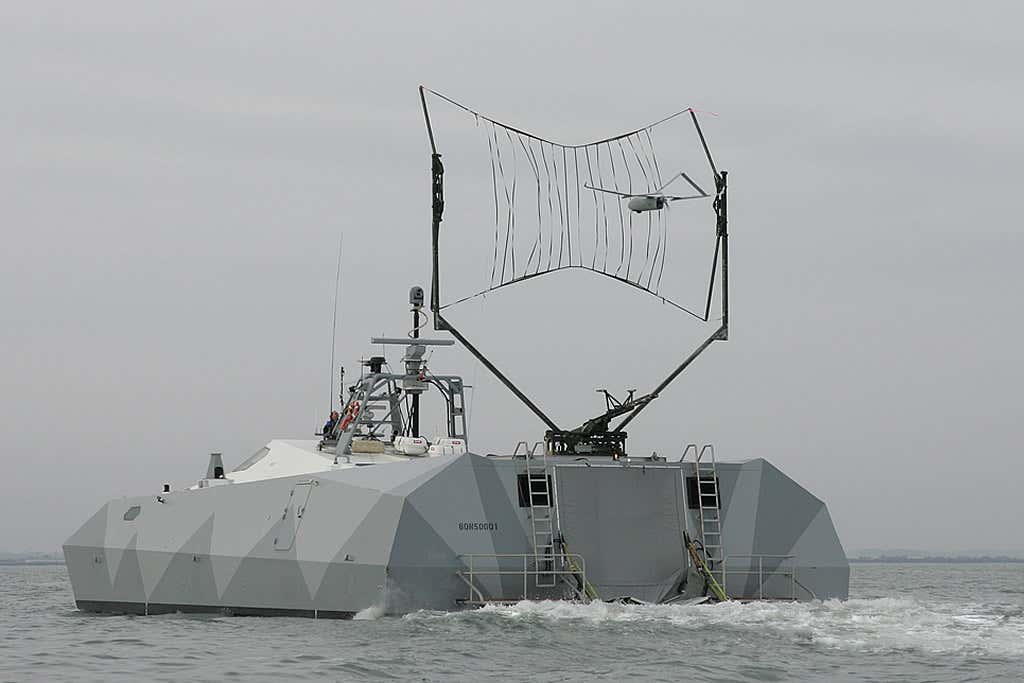
The Stiletto’s M-shaped hull is designed to reduce the ship’s wake, drag, and acoustic signature, while keeping it from slamming against waves and rough surf at high speeds. The design is intended to be much more stable in shallow waters than traditional monohull designs, allowing the Stiletto to launch and recover smaller vehicles including U.S. Special Operations Command’s (SOCOM) 11-meter Rigid Hull Inflatable Boat (RHIB).

The M80’s overall design is also scalable, meaning either larger or smaller versions of the hull could be built. The Stiletto was born in the mid-2000s by the now-defunct Office For Transformation (OFT), and was part of an initiative called Project WolfPAC which aimed to “explore command and control of geographically dispersed, networked, autonomous and semi-autonomous assets” in shallow water operations. You can read more about the M80 and its capabilities in this past feature of ours.
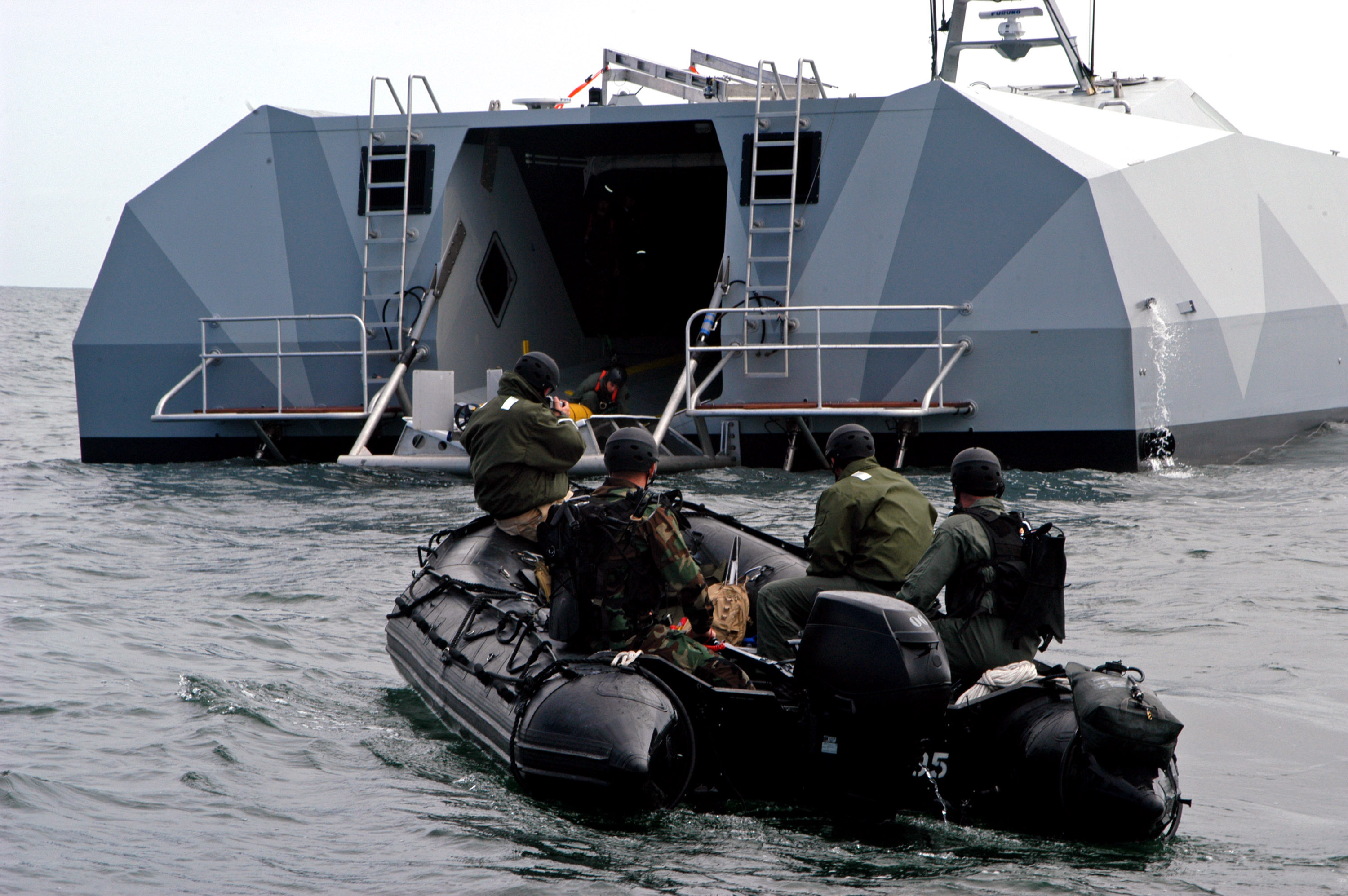
Beyond defending against small drones, the U.S. Navy is pursuing offensive UAV capabilities as well, such as swarming aerial drones that can be launched from unmanned vessels both above and below the waves. The U.S. Marine Corps, meanwhile, is planning to arm their Long-Range Unmanned Surface Vehicle drone boats with loitering munitions. Naturally, the U.S. is far from the only nation developing and refining these capabilities.
While a small drone can’t sink a large warship, one armed with a small munition could cause a mission kill on its own by causing a relatively centralized amount of damage to a vital system. A swarm of similarly equipped drones could do much more harm and there are currently few defenses against such an onslaught. The danger small UAVs pose isn’t all about kinetic threats like “suicide drones,” however. Unarmed small drones can still present significant dangers to large ships. A relatively small number of drones can be used instead to decoy or jam shipboard air defenses and communications, just like land-based air defenses, for example. In addition, UAVs are a threat on their own just for their potential surveillance capabilities. Armed with relatively inexpensive and unsophisticated equipment, a small drone could gather critical intelligence and provide targeting to other platforms and munitions that could cause much more damage than the drone could itself.
Many recent incidents of Navy vessels encountering reportedly unknown UAVs underscore the need for ship-based anti-drone systems. In one 2019 incident, multiple Navy destroyers were stalked for days by unknown drones in training ranges just off of the California coast, an incident even the Navy’s top brass will not explain to this day. With reports of U.S. Navy vessels being seemingly observed by drones and other UAS in restricted airspace, it’s no wonder the Navy is now testing automated anti-drone systems aboard Navy vessels, even if only on its experimental Stiletto test bed for now.
UPDATE: 6:06 PM EST:
DroneShield CEO Oleg Vornik shared additional details via email about the capabilities of the system tested aboard the M80 Stiletto:
Our system is able to deal with UAVs, USVs and UGVs (so, air, water surface, and ground drones). They all use similar tech, although USVs and UGVs have an added complexity of being closer to the ground, with more clutter and ground/water reflections for the sensors.
We do not presently target UUV detection, as their comms work entirely differently to the rest, and the signal propagation under water is quite different. However our AI signal processing software works equally well on sonar (and space) data, which is one of the next steps for our product roadmap. Ultimately, we go where our customers ask us to.
Contact the author: Brett@TheDrive.com
